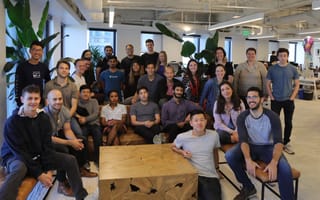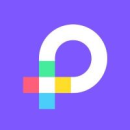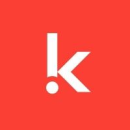
Software engineers are analytical, collaborative and creative. Does that sound like you? If so, we rounded up eight Bay Area tech companies that are actively hiring for talented developers. From healthtech to real estate, finance and more, these companies present plenty of opportunities to hone your skills and show ‘em what you’re made of.
While their tech stacks speak for themselves, the following professionals boast a team of driven, empathetic colleagues.
“It’s a bit of a cliche to say ‘it’s the people,’ but it really is the members of the team who make it worthwhile,” Kinship Lead Software Engineer Dane Wilson told Built In.
Continue below to get the inside scoop on each company’s engineering org.
PicnicHealth helps individuals manage their medical records. The company’s secure platform houses sensitive medical information provided by caregivers and tracked down by its AI. The data is then organized and made accessible so users can have full visibility.
PicnicHealth’s tech stack: “Right now, we have four main technology areas: application, machine learning, data and infrastructure,” Pastel said. “Our application uses Typescript, React, Apollo, GraphQL with Hasura, Postgres, and Node.js. The machine learning team works in Python, but our tooling is pretty flexible. We have PyTorch, Keras API for TensorFlow, XGBoost and LightGBM models all running in production right now. Our data processing is driven by pandas, dbt, Jupyter and BigQuery. Google Cloud Platform is the backbone of our infrastructure and we use Kubernetes and Docker for deployments across all the layers of our stack.”
The latest machine learning research: “We leverage a method to convert strings of medical text into a numerical vector that captures the semantic meaning of the text. To do this, we use the latest in machine learning research: transformer-based word embeddings. When we see free text in our human-in-the-loop machine learning platform, this enables us to look back in history at how similar text relates to standard medical ontologies.”
Expanding service: “Retrieving and structuring all of a patient's medical data is labor-intensive. In our tightly integrated human-in-the-loop correction platform, improvements to model performance immediately reduce manual labor per patient, which means we can expand our service to more sick people who need it. That’s incredibly motivating!”
Qualia is a real estate software company that aims to digitize the entire home buying and selling process. Its products bring together users from across the real estate ecosystem onto a single shared platform to provide greater clarity and transparency to transactions.
Qualia’s tech stack: “One of my favorite things about Qualia engineering is how much the team has invested in developing our own internal libraries and tooling,” Shankwiler said. “DepValue, for instance, is a library that makes it easy for us to build computed fields based on relationships between the source-of-truth data. We also have Reval, built by our CTO Lucas Hansen, which provides instant reloads on both frontend and server-side code. These tools have helped us scale and expand our framework, Meteor, to really make it our own. We’re able to build quickly without any lag and it’s a great developer experience overall. And lastly, we use Semantic UI, a front-end development framework with pre-built components created by our VP of Design Jack Lukic. It creates beautiful layouts and is really easy to use.”
An underwriter management system: “My team is currently working on an underwriter management system. The product provides seamless collaboration between underwriters and title agents by streamlining workflows, maintaining agent profiles and automating audits, reconciliations, remittances and reporting. It’s an engineering-at-scale problem and a huge task. We’re providing the system of record for millions of title policies while guaranteeing data integrity for each.”
A culture of collaboration: “One thing I really appreciate about being an engineer at Qualia is that we get to collaborate closely with our product and design team, from the customer discovery phase all the way through launch. This allows engineers to make important product-level decisions. During my first year at the company, I got to help build a new product in the span of a few weeks, fly out to meet the customer, get them onboarded and then immediately start collecting user feedback. While that was a pretty unusual situation, I think it perfectly encapsulates how Qualia thinks about product development and the role of engineering.”
Finix enables SaaS companies and financial institutions to manage payments without developing an in-house system from scratch or relying entirely on third-party services.
Finix’s tech stack: “We strike a healthy balance of homebrew tech stack and adopting third-party tools. Either way, we make solutions effective by integrating them across our entire systems and processes and ensuring we use them to make data-driven decisions. For example, I love using Scalyr to triage issues across all our environments. I also appreciate how we analyzed instrumentation data from New Relic to optimize our SQL queries and improve our production database performance. A consistent technology layer allows us to maintain our velocity even as we grow in people and complexity. We use AWS to power all our infrastructure and deploy JavaSpring Boot applications as our back-end applications.”
Reimagining data models: “Currently, I’m helping plan and design the evolution of our existing data model to better support our long-term goals. Reimagining our data model is an exhilarating task for me as it results in customer-facing changes, unlike solutions that only change technical implementations internally. Many of the assumptions you make to reach a certain level of scale are violated as you grow to the next level — so you must constantly be reevaluating. We refer to it as ‘updating our priors.’ Our hypergrowth has prompted multiple instances of such inward reflection and I expect many more in the future.”
A dedication to understanding the business: “One special thing about the engineering organization at Finix is how dedicated we are to understanding the business — of Finix and our customers. I'm proud of the effort our people exert to learn the payments domain. Many of our engineers had little to no previous experience in payments, and there are a ton of new terminologies, concepts and nuances to discover and understand. Finix’s mission of becoming the global operating system for financial technology requires us to integrate with many third parties, each with its own idiosyncrasies. Turning numerous disparate systems into one cohesive end product with a seamless customer experience takes excellent domain comprehension.”
Lemonaid Health is a telemedicine platform that allows users to access health from the comfort of their own homes.
Lemonaid Health’s tech stack: “We have been developing new features as serverless microservices and writing them in Go,” Williamson said. “Both the framework and the language are relatively new to us as a team. We’re learning how to make our serverless resources efficient and scalable in this new environment. It feels good to leave behind the days of large, monolithic codebases that are difficult to maintain. Developers own each microservice through deployment to production, so we are not necessarily dependent on DevOps staff or release engineers — only the QA team.”
International expansion: “As a company, we are expanding into international markets. It’s interesting to learn how other countries’ commerce and delivery systems operate and to adapt our U.S.-based software to support them.”
Team building: “We did a Tough Mudder obstacle course together. Of course, it wasn’t required, but many showed up and we had a fantastic time. I’ve done team-building exercises at other companies but none that challenging. It was great to see my coworkers from an entirely different angle (and covered in mud).”
Veeva’s cloud-based software enables pharmaceutical, biotech and general life science companies to develop R&D solutions as well as bring them to market faster.
Veeva’s tech stack: “JavaScript, Java and GraphQL are the three pillars of our front-end technology stack,” Veigel said. “JavaScript ES6 is the primary standard leveraged, but we also use experimental implementations from ES7-ES9. React, Emotion JS and Sass power our componentization, hierarchies and reuses of code throughout the UI platform. Our internally-built component library takes inspiration from both Material Design and Atomic Design. We craft components with the guiding principle that every new application that’s built on the UI platform can be defined as a series of building blocks that can coexist.”
A stable component library: “Have you ever clicked on ‘see Facebook beta’ or a website banner that stated, ‘try out our new design,’ and wondered how a development team enables that beta on/off switch at scale, without an interruption to ongoing feature work? That’s the UI platform team’s most interesting challenge today. That said, our mission is to ‘accelerate UI application development’ for the hundreds of developers building on top of our platform. Therefore, our ongoing challenge, and what we enjoy most, is ensuring we have a stable component library and a software development kit that enables application teams to do their jobs efficiently and in a consistent and predictable manner.”
The power of passion: “Mutual trust is the most powerful aspect of the UI platform. A high trust environment allows us to take strategic risks, safely share ideas and look for mutually beneficial resolutions when design conflicts occur. Angela Duckworth’s book titled ‘Grit: The Power of Passion and Perseverance’ is required reading during a new employees’ first week, as passion also plays a critical aspect in our overall ability to execute effectively. By tapping into and understanding our passions with the UI platform team, we consistently outperform both past teams I have worked with and existing teams within Veeva.”
Quantcast is an advertising technology company and the creator of an intelligent audience platform that empowers brands, agencies and publishers to grow their audiences online.
Quantcast’s teck stack: “Our tech stack at Quantcast really is data,” Allen said. “We respond to three million bid requests per second with a 99th percentile time of 15 milliseconds while choosing the optimum price to bid for the most relevant advertisement from our thousands of active campaigns. This requires constant attention in order to keep our entire bidding stack operating at peak efficiency. It includes keeping our giant feature stores up to date, calibrating our control system to maintain the optimum operating point for each campaign, and ensuring that every component is performant in both the latency and campaign performance dimensions.”
A modern ML engine: “One of our exciting pieces of our Ara™ AI and machine learning engine is named Kamke. Kamke performs lightning-fast set union and intersection queries, with value aggregates like count and sum, across billion-element sets with interactive latencies. We’ve recently added time series capabilities (in addition to existing point-in-time calculations) so that our publishers and advertisers can interactively explore the makeup of their audiences and how those audiences are shifting over time.”
Processing data, quickly: “We believe in doing more with less at Quantcast Engineering. One thing that really shocks engineers that come from larger companies is the massive volume of data that we process and how little we spend (and correspondingly, how little hardware we use) to efficiently process it. Our real-time bidding stack is lean and fast, and we’re always on the lookout for further optimizations. Our data representations are extremely compact, optimized for our access patterns, and we have a compute cluster that regularly performs more than 100 terabytes sorts several times a day.”
Kinship is a pet care coalition that helps customers take care of their pets through a combination of data, products and services.
Kinship’s tech stack: “As a new member of the Kinship family, I was really impressed by our stack coming into this role,” Wilson said. “We have a Ruby on Rails backend powering at least five Ember.js front-end apps. We use Postgres for our database and a JSON:API spec for our REST API. We like to keep things simple, so we have a monorepo that contains all of our apps and we use Docker to containerize and deploy to Heroku using GitHub Actions. For testing, we use Minitest for Ruby and QUnit for Ember.js and CircleCI for continuous integration. I am a really big fan of Heroku and how simple it is to focus on what I love most (writing code). This has been crucial in keeping our process streamlined and developer-focused.”
A unique challenge: “The most interesting project I’m working on right now revolves around our shipping and fulfillment process. We have a number of different services that communicate with each other throughout the order process. Keeping track of these changes presents a unique challenge, especially when we have external consumers that rely on our API.”
Passionate people: “The most unique thing about our team is really how passionate everyone is about what they do. We have a dedicated team that seems ever-willing to drop what they are doing to help you get over whatever hurdles you’re facing. It’s a bit of a cliche to say ‘it’s the people,’ but it really is the members of the team who make it worthwhile. We have a Slack-heavy culture with dedicated rooms for different topics. We also have some of the standard things you would expect on any engineering team, daily stand-ups, sprint planning meetings, sprint demos and weekly retros. Of course, no tech team would be complete without your monthly happy hour.”
Liftoff utilizes data-driven technology and machine learning to drive post-install conversions in mobile apps and increase engagement among users. The platform helps discover audience overlap for better targeting through the application ecosystem, making it easier to install personalized ad delivery systems and filters.
Liftoff’s tech stack: “Liftoff’s main stack involves Clojure and Go, and my favorite tools are Clojure and IntelliJ IDEA,” Zhao said. “I learned about Clojure when I joined the company, but it’s already become one of my favorite programming languages. I also enjoy Presto, along with Apache Superset, as I can run quick ad hoc analysis with large amounts of data.”
Rethinking A/B tests: “Rethinking how to run A/B tests with Apple’s new iOS ATT update is a very challenging, but interesting project. It’s hard because the requirement changes every day as we learn more about the update. Most of the traditional approaches don’t work well. The interesting part is that I have to think outside of the box. I gather a list of potential ideas, think about the tradeoffs, disadvantages and wins, and come up with modifications to make them work for our application. I also get to design a way to validate some of the ideas.”
Explore and experiment: “Our engineering team is very good at documenting and sharing ideas. We have documents for all the experiments we run, system proposals and designs, and any ideas we want to share with the team. As an engineer, I’m also encouraged to write a doc to articulate any ideas I have and share with the team. I’m also constantly receiving overwhelmingly helpful feedback, comments and advice on how to move my ideas along. This really helps foster an encouraging and collaborative environment where you’re trusted to explore and experiment, learn and share freely, and feel fully supported along the way.”



















